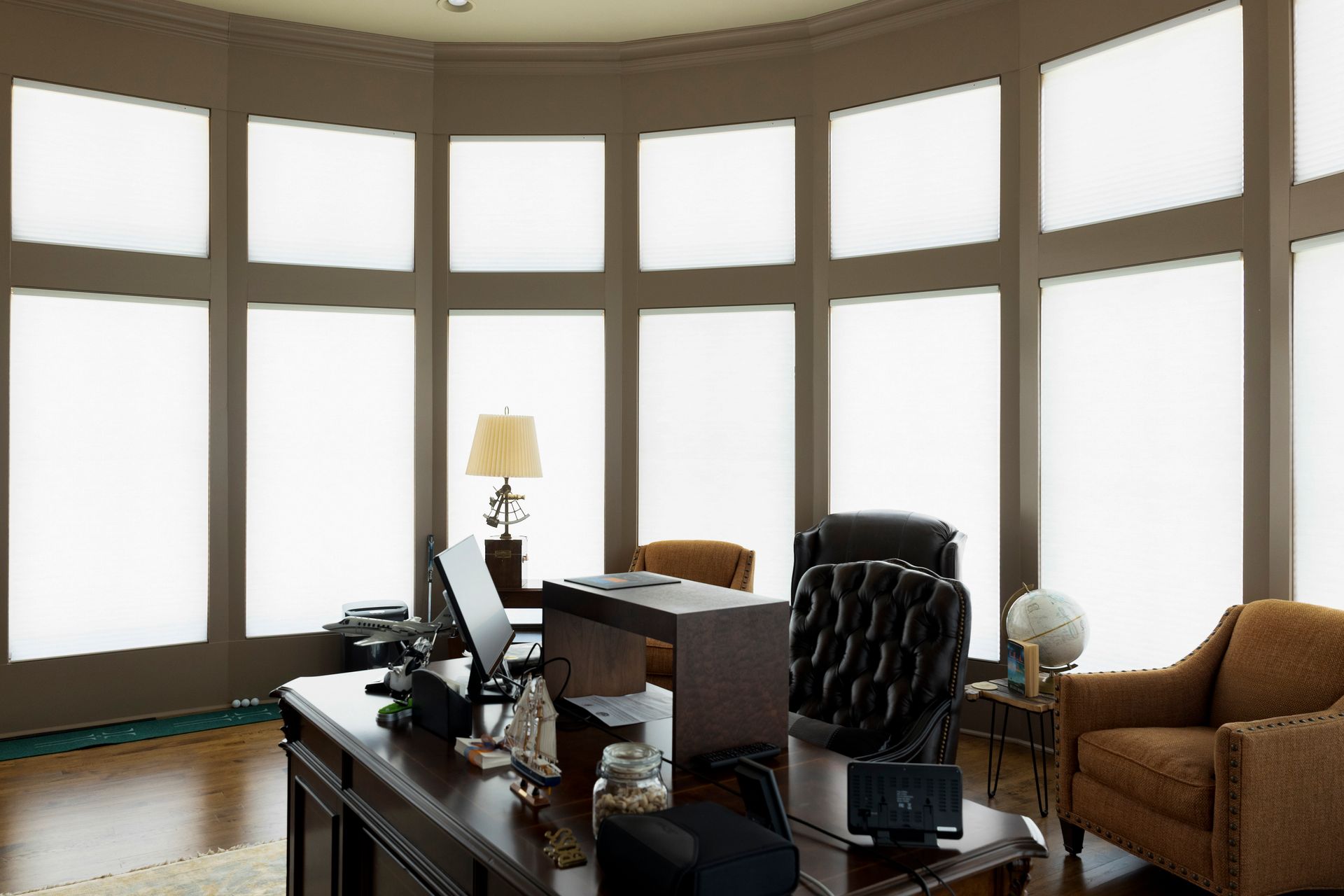The main thing about a bedroom is sleep. Although most people think decorating is all about color, the truth of the matter is that light, scent, texture as well as color contribute to a good night’s sleep. Custom window treatments ensure it looks cozy and inviting as well.
Light
It is now common knowledge that the blue in the light spectrum disrupts efforts to sleep. Removing the TV from the bedroom, closing down the computer for the night and shutting down the cell phone all play a part in removing this blue light from a room ready for bed. However, are you aware that simply reducing the strength of your light bulbs helps the body prepare for sleep ? Putting a dimmer on the light switch is also beneficial to a body that yawns when the sun goes down. If you’re the kind who needs absolute blackness in which to sleep, might we suggest custom blinds, plantation shutters or blackout curtains? For a pretty and attractive look, match the color of your blinds, plantation shutters or blackout curtains to your bedding.
Comfort
Here are some things you can do to make your bedroom more comfortable:
- Adjustable blinds and shades allow star gazing before falling asleep.
- Most people sleep better in cooler climates, and they make it so with ceiling fans.
- De-cluttering a bedroom gives it space, so its inhabitants can relax. To that end, you can buy bedroom furniture with storage included, such as drawers in the bed frame and storage devices beneath the eaves combining shelves, drawers and open spaces for knickknacks.
- Noise is jarring. It disrupts sleep patterns, causing fatigue and mental disorder to the body the next day. Soothing sounds like water trickling in a stream, the sound of the surf against the shore or the trees moving with the breeze on a mountainside can be obtained through CDs playing softly in the background.
Scent
The aroma of certain foods brings back memories. Perfumes instantly take us back to a time when the ladies who wore it taught us or took care of us. It’s not too difficult to make potpourri. Slip it between the pillow and its case, put it in a bowl on the dresser or a shelf, or place it close to a vent. Sachets can be pinned to custom shades and curtains; the scent will waft through the room with each breeze. Perhaps you wouldn’t mind a pot of flowers in your loft or attic bedroom. Some scents, like vanilla and lavender, induce relaxation and reduce stress. Here are some more scents that will make your loft or attic bedroom stand out:
- Valerian is well known as a sleep aid. Its flowers might not smell as sweet as daisies, for instance, but if you can handle the smell, the sleeper enjoys deeper more restful sleep with greater efficiency the next day.
- Jasmine is a sweet-smelling flower with pretty blooms. Sniffing this scent will not only put you to sleep, but give you more restful, better quality sleep.
- Chamomile is a very small daisy-like flower, whose calming effects are very well known. Stress is a goner, and chamomile’s anti-bacterial, anti-fungal and anti-viral effects promises a body well-rested and able to take on the world the next day.
- Lilac is a delicate little flower, but its scent induces sleep, relaxes and kicks insomnia to the curb.
You can also experiment with essential oils to make your own scent that makes your loft or attic bedroom smell nice as well as inducing a restful night’s sleep.
Plants
Nothing says home as much as plants, animals and kids. Plants double as décor throughout the house, but their main function is to condition the air. Removal of detrimental things from the air contributes not only to a healthier body and good sleep, but also to indoor air quality. If homeowners are selling their homes, then make sure you have plenty of plants on hand!
- Aloe plants produce oxygen at night, making sleep more natural and restful.
- Gardenias are good for those suffering anxiety and insomnia.
- English Ivy not only purifies the air, but asthmatics and allergy sufferers benefit from its presence in their bedrooms
- Gerbera daisies also produce oxygen at night as well as helping asthmatics and sleep apnea sufferers
Plants need plenty of light in order to live. Make sure your custom blinds, shades and curtains are open where the plants are placed for the necessary light. The other parts of the blinds and shades can remain closed or adjusted as you see fit.
While the purpose of a bedroom is to sleep, it should wrap you in cozy comfort to invite that sleep. It should also make people who see it want to stay in it. Homeowners redecorating their homes want to use their available space to best advantage as well as making it look nice. We can help with custom window treatments when you contact us to learn more about it.
Expert Advice by Just Blinds


